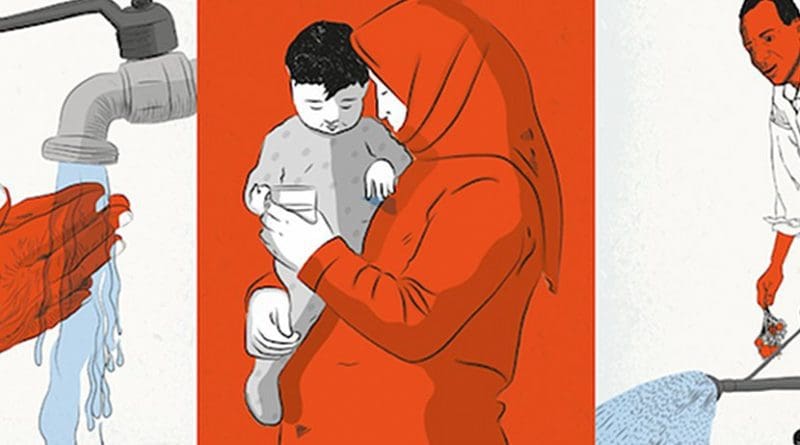‘Water For All By 2030’ Remains Little More Than A Pious Wish – Analysis
By IDN
By Reinhard Jacobsen
More than 2 billion people live without safe water at home. One in four primary schools have no drinking water service, with pupils using unprotected sources or going thirsty. More than 700 children under five years of age die every day from diarrhea linked to unsafe water and poor sanitation. Globally, 80 percent of the people who have to use unsafe and unprotected water sources live in rural areas.
These are some of the facts reflecting stark reality on the ground, making the motto of the World Water Day 2019 – “water for all by 2030” as envisaged in the UN’s Sustainable Development Goal 6 to “ensure availability and sustainable management of water and sanitation for all” – sound like a pious wish.
This applies also to UN Secretary-General António Guterres’ statement until a series of steps are undertaken: “Our bodies, our cities and our industries, our agriculture and our ecosystems all depend on it. Water is a human right. Nobody should be denied access.”
The International Commission for the Protection of the Danube River (ICPDR) points to the critical situation in Europe. Some 20 million people rely on the Danube River for drinking water, yet currently only 25 per cent of its waters are considered to meet environmental objectives in terms of water status and providing a good habitat.
“Improving this is essential and strongly depends on the cooperation of every Danube country, different sectors, and the individuals who need and enjoy the Danube’s waters,” notes the ICPDR.
Besides, the Danube’s surface waters, the slow-moving, slow-changing, and all but invisible natural resource of Danube groundwater is a key supply for drinking water in the region. At least some of the drinking water for 72 per cent of the Danube River Basin’s population – 59 million people – is sourced from Danube-connected groundwater.
“Despite this, it remains under threat from over-abstraction, which is when more water is used than can be replaced by nature, and from agricultural and other forms of pollution. Once contaminated in this way, groundwater can remain so for decades,” says the ICPDR.
Some solutions are already being successfully deployed across the region, notes the ICPDR. These include the implementation of the drinking water resource protection programme in Hungary, and efforts by the Bavarian Ministry of Food, Agriculture and Forestry in Germany, which has appointed special advisors to help farmers put optimal groundwater protection measures into place.
A continuous improvement of practices to protect groundwater and maximize the efficiency and planning of abstraction throughout the region will be vital, says the ICPDR. “The interconnectedness of the invisible waters beneath our feet means that the international collaboration and conversation at the heart of the ICPDR remains as important as ever. “
“We can see that the Danube River basin is not being spared the effects of climate change,” says ICPDR President Péter Kovács. “More frequent or prolonged droughts might increase competition between water uses, and could lead to water scarcity in the long term.”
Referring to the bigger picture and the changing climate, the ICPDR says, the threat of water scarcity and drought throughout Europe has been on the rise in recent decades. The widespread droughts in 2003, for example, impacted the lives of over 100 million people, affected one third of European Union territory, and cost the European economy approximately 8.7 billion Euro in damages. Similar events have since affected large parts of the continent in 2007, 2011, and 2012.
These recent trends highlight the significance of growing imbalances in water supply and availability in Europe, specifically in the context of climate change. “A recent special report by The Economist that predicted the potential levels of freshwater scarcity we could expect by 2050, found that a theoretical rise in temperatures of two degrees Celsius in the Mediterranean region could potentially bring about a 10-30 per cent decrease in the water flow in rivers and streams.”
The ICPDR further points out that the European Union’s revamp of its own twenty-year-old Drinking Water Directive (Directive 98/83/EC) indicates another important shift in focus toward water-related issues. As of February 2018, it responded to the ‘Right2Water’ campaign and pledged to improve access to safe drinking water for all, especially for vulnerable and marginalized groups.
“Giving precedence to topics like access to drinking water and water scarcity at the international level will become increasingly important as climate change continues to affect the Danube River Basin,” concludes the ICPDR.

